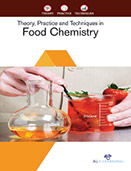Chemistry

Chemicals are vital building blocks for entirety in the world. All living substance, including people, animals and plants, consists of chemicals. All food is made up of chemical substances. Chemicals in food are largely harmless and often desirable – for example, nutrients such as carbohydrates, protein, fat and fiber are composed of chemical compounds. Many of these occur naturally and contribute both to a rounded diet and to our eating experience. Food chemistry deals with chemical composition of foods, with chemical structure and properties of food constituents, and with chemical changes food undergoes during processing and storage. The modern consumers have high requirements for food – it must be fresh, natural, and nutritious/beneficial to health, safe, attractive, tasty, wholesome, convenient, available and affordable. To meet such demands, a thorough understanding of the composition and properties of foods and the changes that occur during handling, processing and storage is imperative. Food Chemistry has stood up to this challenge. The remarkable advances in analytical methodology and instrumentation have provided a wealth of knowledge on the chemical nature of foods. Today we have comprehensive information on the chemical composition of foods, including microcomponents, contaminants, additives and degradation products. We now know the reactions and the factors that lead to alterations in texture, color, flavor, nutritive value and food safety, and are able to control these alterations to produce the desired food products.